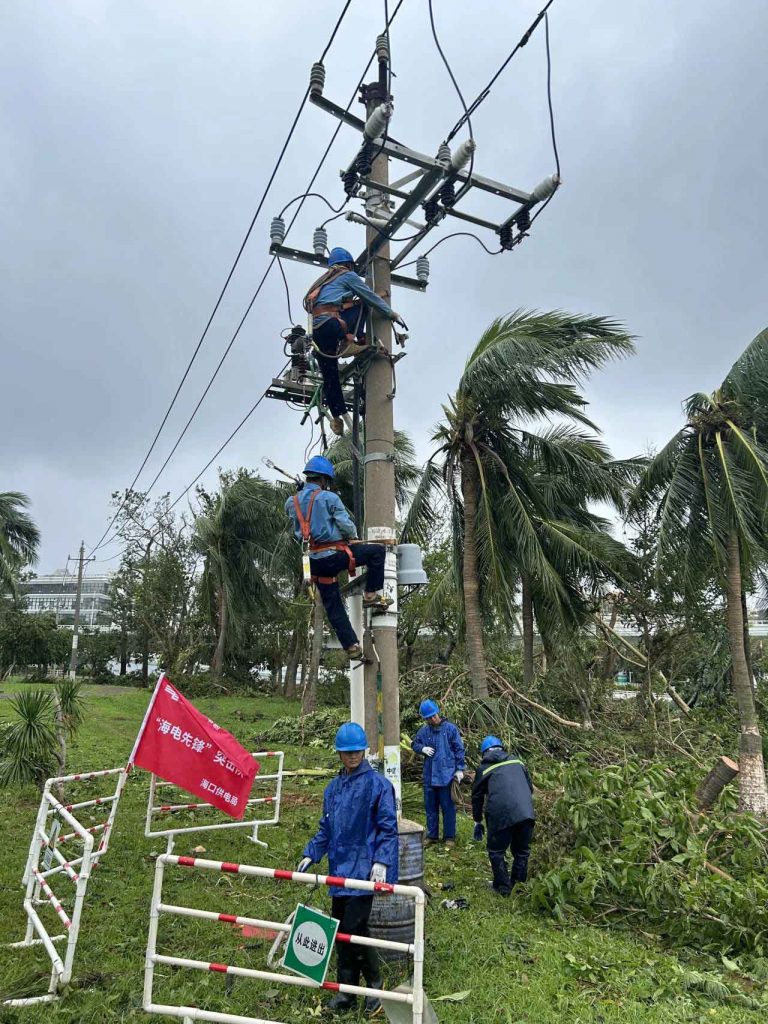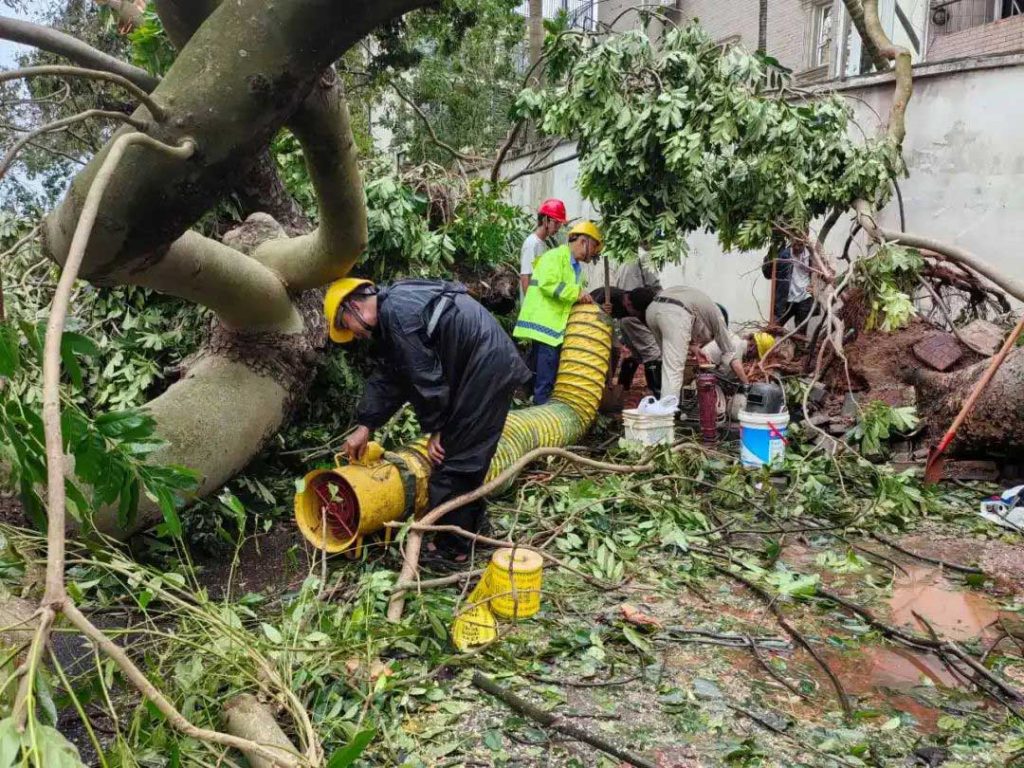Super Typhoon Yagi, the strongest typhoon to make landfall in China since the founding of the People’s Republic, wreaked havoc on Haikou when it struck on September 6.
As the most powerful typhoon to ever hit Haikou, Yagi brought devastating winds, torrential rain, and widespread destruction. Many parts of the city were left without water and electricity, causing severe hardships for residents and significant economic losses.
Impact on Electricity Supply

Destruction of Power Infrastructure: The storm’s winds, which exceeded 17 on the Beaufort scale near the eye of the typhoon, were powerful enough to knock down power poles and sever transmission lines. This caused widespread power outages across the city. Additionally, large trees uprooted by the wind fell onto electrical infrastructure, further worsening the damage. Outdoor equipment, such as transformers and distribution boxes, was also significantly impacted, adding to the disruption.
Line Trips: Strong winds and heavy rain made the power lines vulnerable to tripping, particularly those carrying 10kV or higher. The rain caused insulation breakdowns, which triggered faults, leaving entire districts without electricity. The resulting outages affected thousands of homes and businesses across Haikou.
Substation Shutdowns: The combination of high winds and flooding damaged substations, causing them to go offline. By September 8, nine substations in Haikou had ceased operations, and 273 power lines had yet to be restored, leaving over 190,000 households without electricity.

Emergency Response: The Haikou Power Supply Bureau initiated an emergency response. They established seven frontline command centres and coordinated 35 emergency repair teams, comprising 3,839 people, to repair the damage. The city also deployed 145 emergency power generation vehicles to provide temporary electricity to critical areas. Armed police forces, totalling 740, were dispatched to clear road obstructions, ensuring that repair teams could access damaged areas.
Impact on Water Supply
The city’s water supply system, which relies on multiple water plants to filter and distribute water, also suffered major setbacks.
Water Plant Shutdowns: On September 6, fluctuations in the power grid caused several key water plants, including the Longtang Water Source Plant and the Rujun and Mipu water plants, to trip repeatedly, halting water supply operations. Power was restored gradually over the next 24 hours, but production delays left the pipeline network without water.
Restoration Challenges: Once power was restored, refilling the pipeline network proved to be a slow process. It took at least 14 hours to refill pipes and residential water tanks to 50% capacity. However, demand surged as residents began using water again, slowing the recovery of pressure in the system. Some neighbourhoods, particularly those at the ends of the pipeline network, continued to experience low water pressure or no water at all.

Additional Damage: In many cases, water outages were prolonged due to damage to the water distribution infrastructure. Uprooted trees crushed underground pipes and exposed water meters, further complicating the restoration process. Additionally, some residential complexes experienced issues with booster pumps, which are essential for maintaining water pressure in high-rise buildings.
Emergency Response: Haikou’s Water Supply Group responded by forming emergency repair teams, which conducted 185 repair operations. They completed work at 109 sites, with ongoing repairs at 31 other locations. Signal disruptions in some areas delayed the full assessment of damage. To provide immediate relief, 12 emergency water delivery vehicles were dispatched, supplying 608 tons of water to 45 neighbourhoods.
Ongoing Recovery Efforts and Appeal to Residents
The local government and utility providers are working around the clock to restore normal services. Haikou’s water company has dispatched teams to inspect every neighbourhood, monitor the recovery of the power supply, and assist with repairs to secondary water systems. The fire department is also using fire trucks to deliver water to residents in need.
Residents are being urged to conserve water and to contact the water company immediately once electricity is restored if they continue to experience water issues. The city has called for patience and cooperation as they work to repair the damage as quickly as possible.
Super Typhoon Yagi caused catastrophic damage to Haikou’s water and power supply systems, leaving hundreds of thousands without essential utilities. The sheer force of the storm, combined with the scale of the infrastructure damage, has made recovery a lengthy process. However, with emergency teams deployed across the city and local agencies working tirelessly, there is hope that normalcy will be restored soon. The resilience and understanding of Haikou’s residents during this challenging time will be crucial in overcoming the ongoing hardships.
Related article: Essential Contacts details for Emergency services in Haikou







